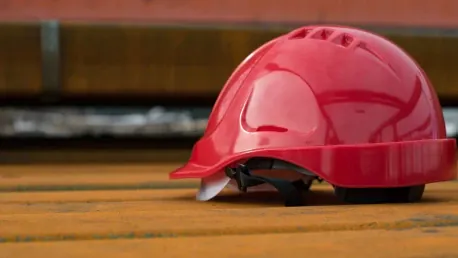The construction industry has long been known for its stringent safety regulations and compliance requirements. However, a significant paradigm shift is underway, moving from a mere focus on compliance to a more holistic approach grounded in empathy and compassion. This transformation emphasizes understanding the mental and emotional well-being of workers alongside their physical safety. By doing so, it not only enhances individual well-being but also fosters a supportive, proactive work environment.
Empathy as a Strategic Driver for Safety
Understanding Daily Pressures
Empathy plays a crucial role in the transformation of construction safety. Workers in the construction industry often face extreme pressures, including tight deadlines and harsh working conditions. These pressures can take a toll on their mental and emotional health, which can subsequently affect their physical safety on-site. When safety advisors and management take the time to understand and address these daily pressures, they create an environment where workers feel heard, respected, and valued.
For instance, the article recounts a senior safety advisor who identified a worker struggling mentally. The advisor encouraged the worker to seek therapy and continued to support him throughout the process. This act of empathy did more than just help the worker mentally; it also created a safer and more compassionate work environment. Empathy allows safety to transcend beyond a checkbox activity, embedding it into the company culture as a shared responsibility.
Building a Culture of Compassion
Creating a culture of compassion within construction firms ensures that safety becomes everyone’s concern. A compassionate culture prioritizes well-being and advocates for viewing empathy as more than just a soft skill, but as an essential element of effective safety practices. By promoting empathy, companies can transform their traditionally tough image and make way for a softer, yet stronger, workforce.
A compassionate work environment significantly strengthens teams, as it encourages team members to look out for one another. When workers feel their concerns are genuinely considered, it improves morale and productivity. By fostering this type of environment, safety measures become more effective, as team members are more likely to engage in and uphold them. Ultimately, a collective responsibility for safety leads to better outcomes for both individuals and the company as a whole.
Moving Beyond Compliance
The Inadequacy of Compliance Checklists
Reliance solely on incident reports and compliance checklists is proving inadequate for achieving substantial safety improvements in the construction industry. While these tools serve as important benchmarks, they do not address the underlying issues that affect workplace safety. For meaningful progress, there needs to be a broader cultural shift towards leadership engagement and open communication.
Leadership plays a pivotal role in setting the tone for a company’s safety culture. By actively engaging in safety initiatives and showing a genuine concern for worker well-being, leaders can inspire their teams to do the same. Open communication is also vital, as it helps uncover hidden challenges and fosters a more proactive approach to safety. When team members feel comfortable voicing their concerns, it leads to better identification of potential hazards and more effective preventative measures.
Integrating Data and Root Cause Analysis
The construction industry can significantly benefit from integrating both qualitative and quantitative data to reveal hidden trends that might not be apparent through compliance checklists alone. Qualitative data, such as feedback from workers and observational insights, can provide context to the numbers, leading to a more comprehensive understanding of safety issues. Root cause analysis takes this a step further by identifying the deeper issues behind incidents, allowing for more targeted and effective interventions.
By addressing the root causes of safety hazards rather than just their symptoms, companies can implement more sustainable solutions. For example, if frequent minor injuries are traced back to worker fatigue, addressing the scheduling process or providing more frequent breaks could be the solution. This proactive approach extends beyond immediate fixes and looks at long-term strategies for improving safety. Regular reassessment of these strategies ensures they evolve with the changing needs of the team and the dynamics of the construction site.
Prioritizing Emotional and Mental Support
Long-term Safety Solutions
Long-term safety solutions in the construction industry require prioritizing not just physical well-being but also the emotional and mental health of workers. Proactive measures such as offering mental health support, encouraging open communication, and early intervention can lead to significant improvements in overall safety. These measures help create a more resilient workforce capable of handling the stresses and demands of construction work.
When emotional and mental support is prioritized, workers are more likely to engage in safety practices and less likely to experience burnout. This leads to a more stable and productive work environment. Furthermore, by addressing mental health proactively, companies can reduce the likelihood of accidents caused by stress or fatigue. This comprehensive approach to safety transforms it from a reactive measure to a proactive, preventative strategy.
Empowering Open Communication
The construction industry has long been characterized by strict safety regulations and compliance mandates. Recently, however, there’s been a noteworthy shift from a sole focus on compliance to a more comprehensive approach that incorporates empathy and compassion. This new direction places a spotlight not just on the physical well-being of workers but also on their mental and emotional health. Understanding and addressing these aspects of well-being are becoming just as important as mitigating physical risks on the job.
By cultivating an empathetic environment, construction companies can create a more supportive and proactive workplace. This can lead to enhanced individual well-being and overall job satisfaction, which not only benefits the workers but also improves team cohesion and productivity. The shift acknowledges that a workforce that feels valued and understood is likely to perform better and exhibit fewer safety incidents. Thus, the industry is moving toward a more humane and effective model, intertwining safety, mental health, and emotional well-being for the benefit of all involved.









